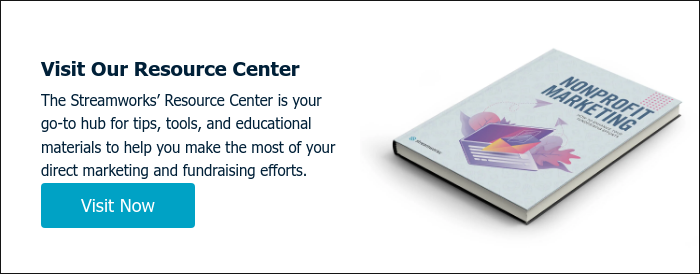Social Media: Where and How to Tell Your Story
Streamworks Blog

In today's world of constant engagement, social media is a marketing must. The numbers don't lie: if you want to reach a broad audience of potential donors, you'll need social to be part of your digital strategy.
Let's break it down.
• Facebook: 2.2 billion active monthly users
• Instagram: 800 million active monthly users
• Twitter: 330 million active monthly users
• LinkedIn: 200 million active monthly users
According to Wordstream, social media makes up 33% of the time people spend online. So, how should you reach out to them?
Determine What You Want to Accomplish
Before you start setting up your accounts and publishing content, come up with your social media strategy and how it ties in with your digital communication plan.
Is your goal to:
• Generate community engagement?
• Educate people on your mission?
• Build your brand?
• Manage your reputation?
• Recruit people?
• Fundraise?
Your goals could be one—or all—of the above, but clearly defining them will help you determine what sort of content and messaging you want to use.
Choose Your Network and Audience
There is a slew of social networks, with more cropping up each day.
Pro Tip: Choose 2-4 networks you want to use for social media and stick with them. Trying to be too many places at once will end up being too much down the road and may derail your messaging and end up hurting rather than helping your brand.
As we listed above, four of the most popular networks are Facebook, Instagram, Twitter, and LinkedIn. Determining your social media goals will help you narrow down which networks you want to choose and why.
• Facebook: a massive audience that looks for informative photos and videos to encourage interaction with friends & family
• Instagram: 90% of users are under 35 and search for images that convey company culture/products
• Twitter: 66% of users are under 35 and look for compelling images and links or conversation starters
• LinkedIn: professionals with a majority over the age of 30 interested in industry-specific articles/links from like-minded professionals
Craft a Content Strategy
When it comes to generating content, keep it balanced:
• 40%—about you: mission, ways to get involved
• 35%—entertainment: impact, volunteer work, pictures and videos
• 25%—information: industry (area of focus), news
After crafting your strategy, start thinking about what content you need to achieve this.
• Compelling visuals partnered with text/stories
• Short videos, this could include Facebook or Instagram Live
• Hold contests (think Ice Bucket Challenge)
• Don't be afraid to use humor
• Ask for impact stories from your followers
• Create a hashtag and use it to encourage engagement, like with a Twitter Chat
Pro Tip: You can use websites like hashtags.org or hashtagify.me to find existing hashtags relevant to your organization and mission
Paid Social and Why It Works
Research conducted by Wordstream shows that the largest share of total US digital ad spend is through Google (38.6%) and Facebook (19.9%). Additionally, 75% of Instagram users will act, such as visit a website, after viewing an ad.
We know that nonprofits may not have the budget for large ad spend campaigns. However, there are avenues you can pursue to get display ads that generate awareness.
Pro Tip: Google Grants is a source for nonprofits that provides users up to $10,000 a month for PPC (Pay-Per-Click) advertising through their Ads service once you get approved.
You can use a modest budget to get the word out. Use it wisely, such as to promote an upcoming fundraising event or a current issue that your organization is addressing.
Track and Try, Try Again
Social media can be fickle, and your marketing efforts may not land on the first try.
Utilize a social listening tool to help you track your social media engagement. There are many free and paid options available, such as Hootsuite, Buffer, or HubSpot. Social listening tools can not only help you craft shareable content—it can show if your paid social campaigns are working.
Pro Tip: Don't be afraid to test things out. Use A/B testing with the same content just shared in a different way to see what people engage with most. Measuring your results will help you find the right mix of content to take your social to the next level.
Test variable data, such as:
• Imagery
• CTA
• Messaging




.jpg?width=352&name=770X310-TargetedAds%20(1).jpg)